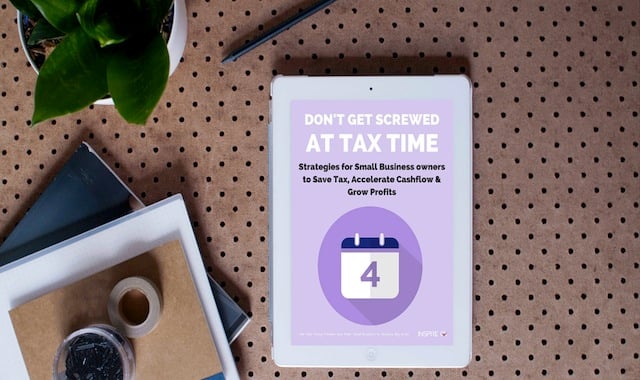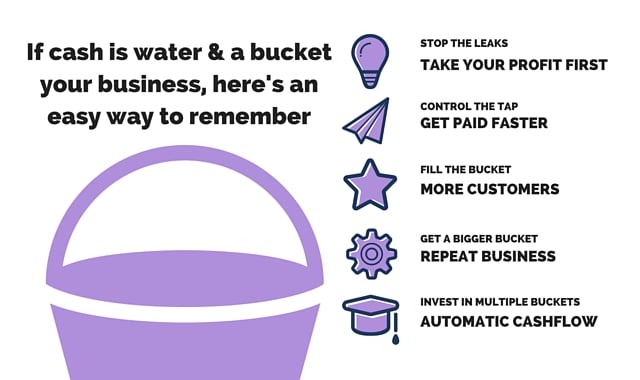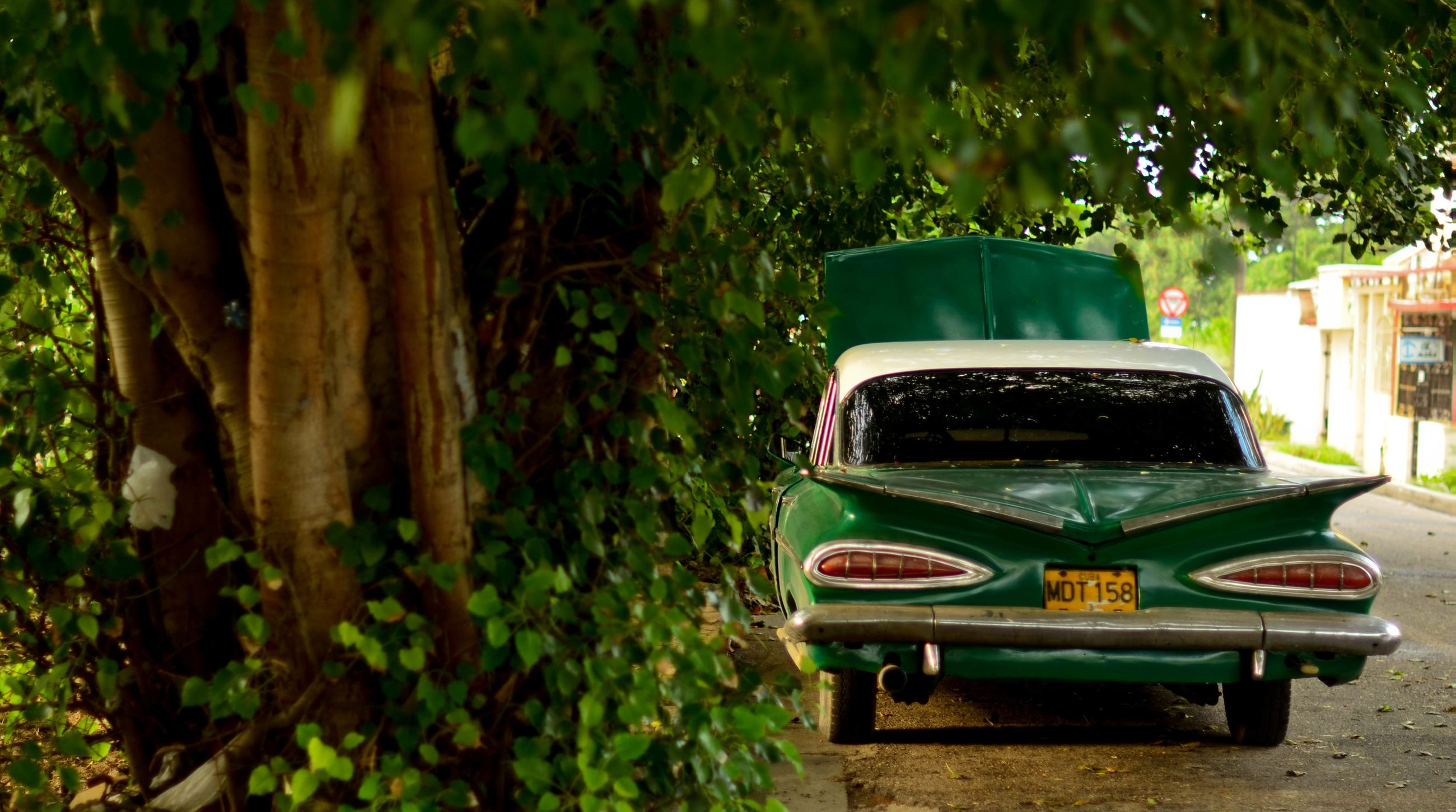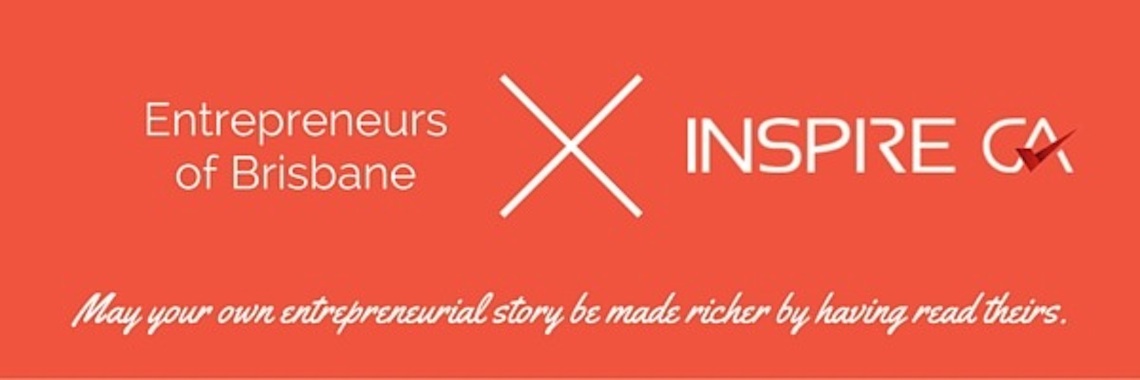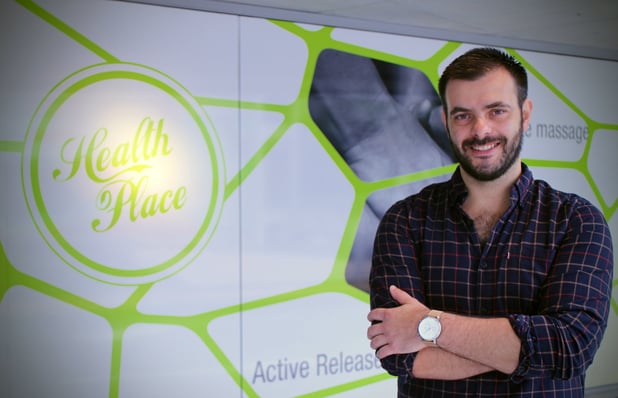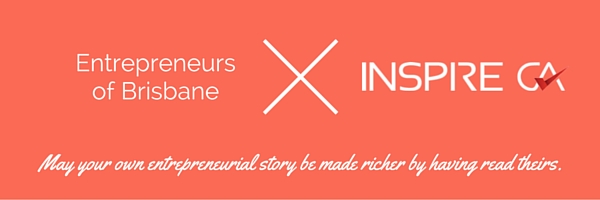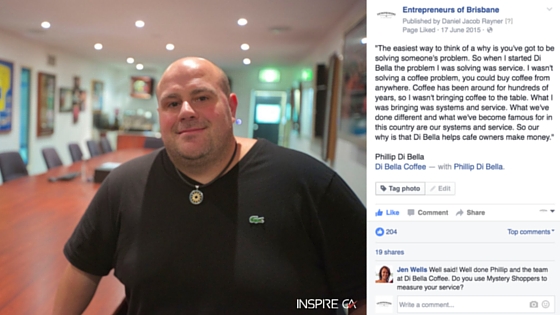Pay your Life Insurance premiums from Super – and get double tax benefits.
How does this strategy work?
Life Insurance is money your family will receive in the event of you kicking the bucket.
Interestingly the premiums you pay for Life Insurance are not tax deductible, unless they’re paid from your superannuation.
Let’s say the premiums for your Life Insurance are $5,000 per year.
Option 1 (Without Tax Planning): Pay the $5,000 Life Insurance premium outside of super.
No tax deduction applies. Sad Face.
Option 2 (With Tax Planning): Pay the $5,000 Life Insurance premium from your super fund.
First of all we need money into your super fund to pay the premium.
Business contributes $5,000 into Super.
This alone saves $2,350 tax, when compared to paying 47% tax in your own name.
Super fund pays 15% tax on $5,000 in super = $750 due.
Super fund pays $5,000 Life Insurance premium.
Super fund get 15% tax deduction for premium expense = $750 refund.
By paying your Life Insurance Premium from super, you’d save $2,350 in tax on the super contribution IN (when compared to paying tax in your own name) AND you’d receive a tax deduction for the $5,000 premium paid.
What do you need to implement this strategy?
- A Business.
- A Super Fund – industry fund or Self Managed Super Fund.
- A Life Insurance policy.
- A chat with an Inspire Chartered Accountant – www.calendly.com/inspireca.
- To take action prior to 30 June.
FAQ’s: Pay life insurance premiums from super.
Why are Life Insurance premiums not tax deductible outside of super?
You cannot claim life insurance as a deduction (outside of super), because you don’t pay tax on the money received when you die.
Because no tax is payable when your family receives that money, it would be unfair to be able to claim a deduction for the premiums along the way.
The ATO has special rules, and allows a deduction in superannuation.
If I paid the same $5,000 premium outside of super, how much would I have to earn pre-tax to pay that?
If you pay a rate of 47% in tax, you’d have to earn $10,638 BEFORE tax, then pay $5,638 in tax.
Leaving the $5,000 after tax to pay your life insurance policy.
Does the same strategy apply to other insurances like TPD, Travel, Home, Car, Pet and Income Protection?
- TPD – Yes, deductible through super
- Travel – not tax deductible, unless the travel itself is deductible
- Home – no, unless it includes business related assets
- Car – no, unless you use your car for business
- Pet – no
- Income Protection – Yes, fully tax deductible outside of super
NEXT STEPS: You can book in a Quick 10 Min Chat here with an Inspire Chartered Accountant to talk about Tax Saving Strategies that will work for you.
Top sales advice from one of top 5 Sales Professionals worldwide (fitness industry)
Sales is such an important part of any business.
Many of us hate the word sales, but it pay the bills and keeps the lights on.
So we asked Richard Bell, the speaker at our upcoming Inspiring Business Event, “when you’re advising sales professionals, what sales advice do you give them?”
Before Rich’s career as GM of The Entourage, he was the youngest GM of Fitness First and there was listed in the top five sales professionals worldwide on several occasions.
What was his sales advice?
“I think sales has come a long way in the last 10 years.
I often joke about it with my team all the time. I think gone are the days of the 1980’s fast-talking backslapping slick sales guy who’s trying to build fake rapport and tell you that your kid’s really cute and tell you that they’re going to give you the best deal and you have to take the best deal today.
I think those days are gone!
And you know what, there was probably an element of that at the start of my career, but it’s had to evolve a lot.
My advice to any young entrepreneur when it comes to sales is, number one, be authentic.
Complete authenticity in everything that you do and allow that person to see who you truly are, not the sales guy or the mask. Drop the mask and be who you are at your heart.
The second thing is it’s got to be a win-win-win.
I deliberately say win-win-win, three wins, because it’s got to be a win for you as the sales professional, entrepreneur, it’s got to be a win for your business, and it’s got to be a win for your customer.
So there needs to be that triangulating, “Is this good for myself and am I doing well in what I’m trying to sell here? Is it good for the customer? Do they like it? Is it achieving what their needs are? And is it good for the business as well?”
Having those three things to approach it with at a higher level without getting into detailed sales groups is the way I approach sales now.
The last thing is having the ability to say no.
As an entrepreneur we can often want to sell everyone everything.
I think there’s a lot of respect and a lot of power in you as an entrepreneur to be able to say, “You know what, I don’t think this product is for you, and no, I don’t think it’s good that you actually buy it from me.”
In today’s business world I think that’s what the consumer wants.
The consumer wants more honesty, more authenticity, and to be told if the product isn’t right for them, and we can shake hands and have a coffee together whether you buy or you don’t buy.
If you loved this conversation with Rich, you’ll love his presentation “Managing high growth, 90 people & a young family, at age 27” at the next Inspiring Business Event.
[su_youtube_advanced url=”https://www.youtube.com/watch?v=HKGm3cbXFc4″ height=”340″ controls=”no” autohide=”yes” showinfo=”no” rel=”no” modestbranding=”yes”]
Make Additional Super Contributions to reduce your tax
How does this strategy work?
You may be aware that superannuation is the best investment vehicle for tax purposes out there.
It’s also easy to put this in the back of your mind for a number of reasons.
You might think:
1) “I can’t touch it now, so why bother…”
2) “There’s hardly anything in there, so I’m going to concentrate on making money in my business.”
3) “The laws change every five minutes, I’d rather not worry about it.”
But while those thoughts may have an element of truth, there are some very effective ways to incorporate your superannuation into a broader wealth creation and tax planning strategy.
For instance, you can:
1) Use your superannuation to purchase your business premises, even if you don’t have the full amount in super
2) Pay 15% tax on earnings on your superannuation if you’re accumulating a balance.
3) Pay 0% tax on earnings if you’re drawing a pension (with conditions, if you’re over 55).
So here’s how the numbers would crunch.
The example we’ll use is where your taxable income is $200,000.
Option 1 (Without Tax Planning): Pay in your own name
The tax rate in your own name would be at individual rates, of up to 47%.
So you’d be up for $67,547 Tax.
Ouch!
Option 2 (With Tax Planning): Contribute $22,000 to Super prior to 30 June.
Your taxable income would reduce to $178,000.
By contributing $22,000 to super prior to 30 June you’d save $7,040 in tax, when compared to paying in your own name.
What do you need to implement this strategy to make additional super contributions?
- A Business.
- Cashflow available put into super.
- A chat with an Inspire Chartered Accountant – www.calendly.com/inspireca.
- To take action prior to 30 June.
FAQ’s: Super contributions to reduce tax.
Do I ever get taxed on money in Super? If so, when?
Yes, you get taxed at 15% in super for everything you contribute and claim a tax deduction for.
This 15% is paid by your super fund when they lodged the tax return (if you own an SMSF); or the tax is taken straight from your balance when you deposit it if you are using a public super fund.
Is there a limit as to how much I can put into super?
Yes, there sure is.
The limit is $30,000 if you’re 48 years old or younger.
And $35,000 if you’re 49 years, plus.
The limits are a lot higher (up to $540,000) if you’re making the contributions from after tax money.
What happens if I don’t have the cashflow to put into super?
To get the tax deduction, the super needs to be paid by 30 June of the year.
Make Additional Super Contributions now before your opportunity is missed for another year.
If I have many family members, can we pool our Super limits?
A super limit is per person.
And yes, you can contribute the $30,000 or $35,000 for each person. It will end up in their own super account, though, so for instance, you cannot ‘borrow’ a super limit from another family member and pay yourself $40,000 instead of $35,000.
NEXT STEPS: You can book in a Quick 10 Min Chat here with an Inspire Chartered Accountant to talk about Tax Saving Strategies that will work for you.
Ben Walker of Inspire SMSFS Pty Ltd (1243433) is an authorised representative of Finance Wise Global Securities Pty Ltd ABN 60 146 708 045. Finance Wise Global Securities Pty Ltd holds an Australian Financial Services License (No. 397877).
Distribute to your Children Under 18 – Tax Planning Strategies to action prior to 30 June
How does this distribute to your children strategy work?
Discretionary Trusts are great for Young Families in Business as they give you… you guessed it, DISCRETION.
In fact they’re more well known as Family Trusts.
They give you discretion about who pays tax, how much they pay and potentially when it’s paid.
So let’s combine the power of discretionary trusts with the fact the you have a bunch of little ones running around the house!
The example we’ll use is where your taxable income is $200,000.
Remember all those dirty nappies, sleepless nights & Saturday morning sports events?
Well the ATO is about to reward you for being a busy parent juggling a family and a business!
Option 1 (Without Tax Planning): Pay in your own name
The tax rate in your own name would be at individual rates, of up to 47%.
So you’d be up for $67,547 Tax.
Ouch!
Option 2 (With Tax Planning): Use your Discretionary or Family Trust to distribute $416 to each of your Children under 18.
Let’s say we you have 3 little ones under 18…
- That’s $416 to little Johnny.
- Another $416 to baby Sarah.
- And a final $416 to Mikey aka “Wreck It Ralph”.
With 3 kids, you’d reduce your taxable income by $1,248 which would means you’d save $586 in tax, when compared to paying in your own name.
What do you need to implement this strategy?
- A Business.
- A Discretionary or Family Trust.
- Kids under the age of 18.
- A chat with an Inspire Chartered Accountant – www.calendly.com/inspireca.
- To take action prior to 30 June.
FAQ’s: Distributing income to your Children.
Why $416? Seems low…
Many years ago, this used to be a few thousand dollars for each child.
The ATO has reduced the limit over the years, and it now sits at $416 per child.
What about Children OVER the age of 18? Can I distribute to them too?
In most cases, yes – which (depending on their circumstances) massively increases the tax savings! #FistPump
My wife is pregnant and baby is due after 30 June, can I still flick $416 to the bun in the oven?
Nice try… but no.
They have to be born before 30 June to count.
Do step kids count?
Yes.
Most trust deeds will allow this if you’re married or in a de facto relationship with their mother or father.
We have adopted children, do they count?
Yes – so long as they legally your children.
Do I have to actually give them the $416? They already cost me more than that a week!
The fact that you’re already supporting them more than $416 in the year, means that you have already given the money to them (or paid for expenses on their behalf worth more than $416).
So you don’t need to give them $416 in pocket money! Phew!…
So you’re telling me, if I have 15 children, I could bring my taxable income down by 15 x $416?
Yes, that’s right.
Tax free income of $6,240. (A saving of $2,933 in the example above!)
NEXT STEPS: You can book in a Quick 10 Min Chat here with an Inspire Chartered Accountant to talk about Tax Saving Strategies that will work for you.
DISTRIBUTE INCOME TO RETIRED PARENTS (& IN LAWS!)
How does this strategy work?
Discretionary Trusts are great for Young Families in Business as they give you… you guessed it, DISCRETION.
In fact they’re more well known as Family Trusts.
They give you discretion about who pays tax, how much they pay and potentially when it’s paid.
So let’s combine the power of discretionary trusts with the fact the your parents may be in a lower income bracket than you are.
The example we’ll use is where your taxable income is $200,000.
Brace yourself… the folks are about to become more useful to you than just babysitters on date nights!
Option 1 (Without Tax Planning): Pay in your own name
The tax rate in your own name would be at individual rates, of up to 47%.
So you’d be up for $67,547 Tax.
Ouch!
Option 2 (With Tax Planning): Use your Discretionary or Family Trust to distribute income to retired parents.
Let’s say we were to distribute $37,000 to mum and $37,000 to dad.
- The first $20,000 each the tax rate would be 0%.
- From $20,000 to $37,000 each the tax rate would be 21%.
Without being a numbers person, you can already see that you’ll be far better off!
In fact you’d save $24,920 in tax, when compared to paying in your own name.
What do you need to implement this strategy?
- A Business
- Parents who are self funded retirees
- A chat with an Inspire Chartered Accountant – www.calendly.com/inspireca.
- To take action prior to 30 June.
FAQ’s: Distributing income to retired parents.
What about the in-laws, they’re retired too. Can I flick them $37,000 each too?
In most cases, yes – which just increases the tax savings! #FistPump
Why $37,000? Can I send them more?
Absolutely – but we wouldn’t recommend any more than $80,000 for each parent. The question of “how much” to give them is very dependent on your individual circumstances. We’ll discuss this when we talk.
I don’t have a Discretionary Trust in my Business structure, I’m just an ABN holder. Can I still implement this strategy?
No. And you shouldn’t be running your business as a sole trader. See our words of warning at the bottom of this article: https://inspireca.com/business-structuring-made-easy-part-2-sole-traders/
Do I have to actually give them the $37,000?
Yes. The cash needs to transfer to their accounts from the trust. What they do with the money after that is their decision!
I love this strategy, I didn’t do it last year, can we back date the strategy for last year too?
No. If you could have done this, you need to fire your accountant IMMEDIATELY.
You can only implement this strategy from the current financial year forwards.
What if my parents receive Centrelink?
Unfortunately receiving a distribution while they’re receiving Centrelink will remove or reduce their benefits.
The tax benefits usually DO NOT outweigh the reduction in benefits, so it is not efficient.
NEXT STEPS: You can book in a Quick 10 Min Chat here with an Inspire Chartered Accountant to talk about Tax Saving Strategies that will work for you.
There’s a once-off opportunity to save or defer tax (legally) for your business.
We are fast approaching the end of the 2016 financial year, and now is the time where we proactively look for opportunities for our clients to save or defer tax (legally).
This Tax Planning service is all part of the INSPIRE experience which means our clients don’t have to pay any extra fees for this tax planning advice from us.
In fact, this is the time when we pay for our services over and over, like we did with Ross!
During Tax Planning, we’ll discuss your estimated profit for the full financial year and start brainstorming tax planning strategies.
If you’d like to have ‘in’ on this, let’s start with a quick 10 minute chat here: https://calendly.com/InspireCA
Keen for the detail?
How our Tax Planning Process works
First of all, we request from you details of your expected income and business profits for the 2016 tax year (1 July 2015 to 30 June 2016). This includes all wages / employment income, interest and dividends and rental income received, business profits / losses, and any capital gains / losses you expect to make.
Based on this information, we estimate your taxable income and your tax payable BEFORE any tax planning strategies. For example, we may calculate (based on your information) that you may have a taxable income of $100,000 for 2016. This would result in $26,947 tax and Medicare levy payable.
Secondly, we discuss all of your tax planning options. Some of these may be things to do in your business, and some of these may be investment / wealth creation options.
Third, we provide you with a report that explains in plain English the tax planning strategies we recommend and exactly how much tax you will save.
And finally, we provide you with an easy-to-follow Action Plan to ensure that both you and we can do everything that needs to be actioned before 30 June.
Make it Rain by stopping the leaks
TAKE YOUR PROFIT FIRST
“Money isn’t everything, but having a mountain of it sitting around is handy.”
Step 1 – Stop the leaks
This might surprise you but the Profit equation you were taught is wrong.
Sales (minus) Expenses (equals) Profit does not work.
If it worked you’d have more money in your account than you could poke a stick at!
But statistics (and daily emails) says tells us that cashflow is tight and profit is a distant memory.
Why doesn’t the Old Profit Formula work?
Because of an economic principle called Parkinson’s Law.
Parkinson’s Laws says that “an available resource will always be used up.”
For example, when you eat a meal.
You fill up your plate.
Then you eat everything on the plate.
It’s human nature. (Especially if you’re a kiwi like me!)
It’s how we we’re brought up. It’s Parkinson’s Law.
So in the OLD Profit you sell sell sell & the money (food) goes into one bank account (plate).
Then we incur all the expenses we think we need to incur in order to deliver on our promises.
Rent, Payroll, Taxes, Subscriptions, Marketing …
And BOOM!
Like magic.
It’s all gone.
No or little profit leftover for all your hard work.
It wasn’t a magic trick.
It’s Parkinsons Law.
All available resources will be used up!
Or using the plate analogy, we fill our plate, we eat until the plate is empty.
Sometimes whether we we’re hungry or not!
So knowing that it is very, very hard to change human behaviour (ever tried and failed a diet? I have!)
We simply recommend eating from a smaller plate.
The New Profit formula is
Sales (minus) Profit (equals) Expenses.
Commit now that a certain percentage of EVERY DOLLAR that comes in, goes into a separate bank account at a separate bank.
Start with just 1% if you have to.
Putting Your Profit First is more about the habit than the amount.
Start now no matter how big or small the amount.
Join me next week as I share with you Step 2 – Control the Tap, Get Paid Faster.
Questions for Self Analysis:
- Revenue – How happy are you with your current revenue?
- Profit – How happy are you with how much profit you have sitting in your profit war chest?
- Expenses – How happy are you with the percentage of tax you are paying?
- Expenses – How happy are you with your current owner’s salary?
- Expenses – Operational Expenses (Wages, Rent & Subscriptions) – How happy are you with your current level of expenses?
How Inspire Can Help you take your profit first:
We run a Become a Cash Rich Business [Workshop] and for just $99 you can –
- Know your numbers (am I bleeding profits? If so how much and where from?)
- What healthy look like (for my turnover how much should I be paying – Profit, Owners Pay, Taxes and Operational Expenses?
- For my current numbers, how do I get healthy again? (a simple step by step method to get on top of your numbers, build a 3 month cash reserve and put your profit first)
What is a Car Fringe Benefit?
A car fringe benefit can occur when an employer makes a car they own or lease available for the private use of an employee. If you conduct your business through a company or trust, you may be an employee of the company or trust.
Are any of your business cars being used privately by an employee?
When a non-cash benefit (like the use of a car) has been provided to an employee, your business may be liable to pay Fringe Benefits Tax (FBT).
You can calculate the taxable value of your Car Fringe Benefit using either the Statutory Formula Method or the Operating Cost Method.
But that’s our job!
Your job is to provide the following information for each business vehicle as soon as possible, after 31 March 2015.
| Vehicle Registration Number | |
| Vehicle Description | |
| Vehicle Make / Model / Year | |
| Odometer Reading as at 1 April 2014 | |
| Odometer Reading as at 31 March 2015 | |
| Business Use Percentage(as per log book) |
This information will help us to work out:
- which method yields the lowest taxable value
- reduce your FBT liability to nil; and
- ensure you keep adequate FBT records.
Warning! You need to have a valid log book to substantiate your business use. You will be required to sign a Log Book Declaration. If you don’t have a log book for each car, start one BEFORE 31 March 2015…
If you would like to read more information about the two calculation methods for car fringe benefits continue reading what is a car fringe benefit? – Advanced.
A car fringe benefit commonly arises when an employer makes a car they own or lease available for the private use of an employee. If you conduct your business through a company or trust, you may be an employee of the company or a trust.
A car is made available for private use by an employee on any day the car:
- is actually used for private purposes by the employee or associate
- is not at your premises, and the employee is allowed to use it for private purposes
- is garaged at their place of residence, regardless of whether they have permission to use it privately.
Calculating the Taxable Value of a Car Fringe Benefit
You can calculate the taxable value of a car fringe benefit using either of the following methods:
- Statutory Formula Method
- Operating Cost Method
Statutory Formula Method
The taxable value is calculated by applying a statutory formula percentage to the cost of the car at the date of purchase or lease. A flat 20% applies, regardless of the distance travelled, to all car fringe benefits you provide from 1 April 2014 (except where there is a pre-existing commitment in place before 7:30pm AEST 10 May 2011 to provide a car). Your liability is reduced by the number of days the car was not available for private use, and any employee contributions made towards the running and maintenance costs of the car.
| Base Value of Carx Statutory Fraction
x No. of Days Benefit Provided |
EmployeeContribution | |
| No. of Days in FBT year |
Base value of the car
- If the car is owned less than 4 years prior to commencement of the FBT year = original cost price of car
- If the car is owned more than 4 years = two-thirds of the cost price of the car
Important Note: Cost Price of the Car
- Original purchase price (including GST, luxury car tax, excluding stamp duty and registration)
- Costs attributable to acquisition such as delivery
- Non-business accessories e.g. paint protection, fabric protection, rust protection, window tinting
Statutory Fraction – Pre-existing commitments
| Total km’stravelled in
FBT year |
Statutory % | ||||
| Prior to May 2011 | From10 May 2011 | From1 April 2012 | From1 April 2013 | From1 April 2014 | |
| 0 – 14,999 | 26 | 20 | 20 | 20 | 20 |
| 15,000 – 25,000 | 20 | 20 | 20 | 20 | 20 |
| 25,000 – 40,000 | 11 | 14 | 17 | 20 | 20 |
| Over 40,000 | 7 | 10 | 13 | 17 | 20 |
Operating Cost Method
The taxable value is based on the private usage proportion of the total costs of either owing or leasing and operating a car during the FBT year.
| Total Operating Costsx Business Use Percentage | Employee | |
| Contribution |
The total operating costs of a car include actual costs (such as running costs) and deemed costs (such as depreciation and interest). Running costs include repairs, maintenance, fuel, registration and insurance. If the employer leases the car, then the leasing costs of the car (for the period it’s used to provide fringe benefits) are also included.
For cars owned by the employer
- Deemed Depreciation is calculated by multiplying the depreciated value of the car at the start of the FBT year by the deemed depreciation rate applied at the time the car was purchased (after 10 May 2006 25%)
- Deemed Interest is calculated by multiplying the depreciation value of the car by the statutory FBT benchmark interest rate (5.95% for the 2014-2015 year).
To determine the applicable business percentage of a car a log book must be maintained for a continuous 12-week period which is representative for the use for the full FBT year.
Private use of a car is generally any use that is not for income-producing purposes. Travel to and from work is normally private use, even where there employee undertakes minor errands such as collecting the mail.
Warning! While an employer can use the operating cost method for a particular year for which a log book has not been maintained, there is no reduction in the operating cost of the car for any business journeys made.
Employee reimbursement
The taxable value of a car fringe benefit calculated under the Operating Cost Method may be reduced by an employee contribution made or any unreimbursed car expenses incurred by the employee.
Exempt Car Benefits
Work related travel in commercial cars
A car benefit will be an exempt benefit where the vehicle constitutes a taxi, panel van, utility or other road vehicle designed to carry a load less than one tonne (other than designed for the principle purpose of carrying passengers) and the employee’s private use is limited to:
– Travel incidental to work-related travel e.g. travel between home and work; and/or
– Non-work-related use which is minor, infrequent and irregular.
Cars used for emergency services
Cars used for emergency services which are garaged or kept at or near an employee’s residence are exempt car benefits, where the car:
– is used by a police, ambulance or fire fighting services; and
– is fitted with a flashing warning light and siren, and
– has exterior markings which indicate its use.
Cars supplied by personal services entitles
As a personal service entity is unable to deduct car expenses from more than one car utilised by an individual, a car benefit in respect of a second car is an exempt benefit in relation to an FBT year.
Ben Love, Father, Businessman, and Hero
We believe that every business owner has an inspiring story to tell. A story of how they began. A story of how they overcame the odds. A story of what drives them. A story of when they had a breakthrough. A story of who inspires them to keep going. Entrepreneurs of Brisbane is where we tell these inspirational stories, one entrepreneur at a time.
Hi Entrepreneurs Jessica Kate here, Editor of Entrepreneurs of Brisbane (EOB) and Community Manager at Inspire CA.
Introducing Ben Love from Grassroots IT:
He is a prime example of the hard work, sacrifices and challenges of following your dreams. His story will bring you to laugh, cry and dream beyond what you think is possible now.
“I get a massive amount of satisfaction from watching something that I have created grow, seeing the business go about its machinations, and achieving what it’s there to achieve. In some ways it’s like having children. You don’t own your children, you just help guide them to whatever they will ultimately be on their own. There’s a certain amount of parental pride watching your children as they take new steps in achieving their goals.”
What has been your experience in juggling a young family and a small business?
While it’s always challenging to juggle a young family and a growing business, we have had some extra curve balls over the past five years.
When my wife Annie was pregnant with our third child, we received a prenatal diagnosis for Down syndrome.
That really tipped our world upside down.
It was pretty hard to function in general for quite a while after that, let alone grow a business.
Anyway, we moved through that and Nicholas was born and he’s the light of our lives. He is the most amazing kid. He was even featured on the front page of the ‘qweekend’ (the Courier Mail magazine) when he was one, in an article on Down syndrome and prenatal testing.
Within two years of the Down syndrome diagnosis, we discovered that our eldest son, Sam, had Acute Lymphoblastic Leukemia.
Annie and I were pretty much still in crisis mode from the first diagnosis, so we just basically swung into action.
We just rolled with it.
Within 24 hours we were living out of the hospital and Sam had started intensive Chemo. He’s doing really well now. He has been undergoing treatment for two and a half years, and finishes in November 2016.
What did you learn personally from that traumatic experience?
Whilst obviously very challenging for our family and I wish our son didn’t have to endure chemotherapy treatment, I think it’s ultimately been a positive experience going through those two diagnoses. I mean, it’s changed me immensely – in who I am, with how I approach people, with the empathy I can have.
How did the business perform during this family crisis?
I was effectively absent from the business for probably six weeks.
I might have been there but my brain wasn’t there. I was sitting in a chair but I wasn’t consciously there.
A lot of people didn’t understand the impact that it would have on me, and therefore why I was so absent.
Literally, I didn’t go to work for about six weeks. When I came back and started re-engaging with the business, the business was fine, the business had not crumbled in my absence, the clients had not all fled.
In fact, we added new clients that I had never met. I actually had a few people say to me, all independently,
“Ben, I’ve just realized what you’ve been doing all these years, and what a solid business you’ve built. That you were able to, without notice vanish for a month or two and your business kept doing what it was doing.”
It was amazing for me to hear that from other people, and I was then able to look at it and go, “bugger me, you’re right.”
That was a real turning point in my thinking towards the business, and my ability at an emotional level to let go of some things and to just let the business grow. To feed it, give it the resources it needs, give the people the support when they need it. In a lot of other ways, I just needed to get the hell out of the way and let these people flourish, let this business flourish.
What was it like when you first started in Business?
We were so lucky when we started because we had nothing. That was such a gift. We had nothing to lose. After working on a remote island in the Whitsundays and doing some traveling overseas, we landed back in Brisbane with no commitments and decided to start a business. We had no job to go to, we didn’t even have rent to pay on a house, we had no car, we had no dependents, we had nothing. These days, I’ve got three kids, a wife, a house, a business and staff, and all the associated stress. It would be a dream of mine to have nothing again!
What does it mean to you to be a Great Father?
You have to recalibrate your entire role in the universe. I’m no longer me, I’m now a parent.
When we had our firstborn, for the first few months I had no idea what my role was. It took me a few months to realize that my job was not to take care of the child, my primary job was to take care of the mother. The mother’s job was to take care of the child.
Once I worked that out, and we all found our roles in this new world of parenting, everything eased up a little bit.
The trouble is, the kids grow and then you have another child, and the whole thing gets shaken up again! You’ve got to reassess the whole thing all over again, re-evaluate your position and how you can best support everybody who needs you.
What is it about the Business Journey that you love?
I think there is just something in me, something genetic. That means that I was always going to be in business, I was always going to be doing something like this. Pretty much all of my family run their own businesses, all of my wife’s family run their own businesses. I cannot say whether there’s cause or effect, but it’s just the world that I live in to a certain degree.
Honestly I love business, and I love seeing other people succeed in their ventures.
We can hopefully play our small part in keeping the light green for them, in making sure that technology and IT and all those things aren’t a barrier to where they’re trying to go.
“There’s that, and I just get a massive amount of satisfaction from watching something I created grow, and seeing what I can achieve, and seeing what it becomes. In some ways it’s like having children, you don’t own these children, you just help guide them to whatever they will ultimately be on their own.”
There’s a certain amount of parental pride watching your children as they take these new steps and achieve things, in some ways it’s the same with the business. There’s just this sense of pride and satisfaction watching the business go about its machinations, and achieving what it’s there to achieve, and obviously the people in it.
I love being able to provide jobs. I love helping and mentoring people, and lifting them up and helping them head in the direction that they want to head.
Plus these days were making a bit more money, so we’ve got some more money to give away. Purely in that sense, we can have a bit more impact for some of the charities and causes that we support. If we didn’t have a successful business and income, we wouldn’t have the money to be able to support these causes.
Introducing Pedro Alcobio, owner of The Health Place
We believe that every business owner has an inspiring story to tell. A story of how they began. A story of how they overcame the odds. A story of what drives them. A story of when they had a breakthrough. A story of who inspires them to keep going. Entrepreneurs of Brisbane is where we tell these inspirational stories, one entrepreneur at a time.
Hi Entrepreneurs Jessica Kate here, Editor of Entrepreneurs of Brisbane (EOB) and Community Manager at Inspire CA.
Being a professional athlete requires a lot of discipline, work and support. It is not a career for the faint of heart, that’s for sure! Athletes are almost a ‘race’ of their own as they are definitely not your average Joe, they think, eat, live and even breath different to the rest of us. I know this first hand as my father is a professional long distance runner. He has competed in many races all over the world. I grew up as one of those children, you know the ones in the ‘runner’ pram. Dad would run every where training for his next big race. Once my sisters and I grew out of the pram dad made a rickshaw that attached to the back of his pushbike.. there was no stopping this man!
Like every athlete and their relatives know the human body has been amazingly designed but it needs a bit of tender loving care for it to keep pumping. I recently had the provilige of hearing Pedro Alcobio’s heart and mission of how he plays an integral part of helping Australia’s best athletes keep in top shape so they can perform to win Aussie Gold and represent our country in front of the world.
Here is his story of how he got into the profession of bringing much needed support and therapy to the QLD Ballet, Wallabies, Queensland Reds etc… and has managed to create a world renowned business right here in Brisbane.
PEDRO ALCOBIO: THE HEALTH PLACE
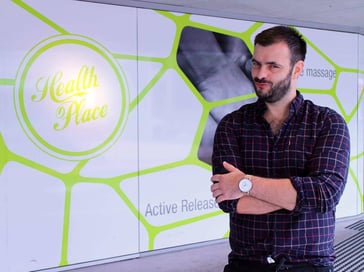
Stop complaining and get shit done.
Opening your own business is not just a one man show. I have learnt so much from my mistakes. I now know what works and what doesn’t, and as a result I am able to train up and equip my staff to fast track their way to success.
Having an incredible team around you and prioritising great communication is the key. As a business owner it can be tempting to get on the ‘high horse’ by thinking that your staff are lucky to be working for you and as a result leave ‘good communication’ as an afterthought.
Together, we’re working towards changing the natural health industry.”
We have a big impact on the professionals lives with what we do. We play a huge part of their recovery. If they miss a treatment they try to look for us as a private client and they use us for that as well. The club isn’t telling them that they should use us but because its such a huge part of their recovery they seek us out.
Now their coaches organise their training according to the massage session we give them Everything is coordinated probably. Things are definitely changing in the industry, and thats what we want. Massage is more than an excuse for a relaxation session, it’s an opportunity to fix people.
An example of this is one of my older clients, he has been with us for 2 years now, Tony, when he first came to see me he had really bad knees. The doctors said they were so damaged that he needed knee replacements but it has been 2 years and he hasn’t needed any knee replacements. He has even been playing golf 3 times a week, going to the gym and he just came back from an 8 week caravan tour with his wife. That’s the kind of stories that i love. We managed to take all the symptoms that he was experiencing and not only manage the pain but actually fix him. He is now in a better shape than me!”
Want more Inspiration?
- If you’d like to nominate an Inspirational Entrepreneur of Brisbane to be featured email me on jessica@inspireca.com with who and why.
- Want to read more Entrepreneurs of Brisbane stories, like the Facebook Page and read more on the EOB Blog.
- Want to rub shoulders with fellow Entrepreneurs of Brisbane in person? We run a monthly Inspiring Business Event just for you. Tickets will be released soon!
- Are you an Entrepreneur of Brisbane who needs help getting their tax sorted? Book a 10 min chat with a Chartered Accountant (at no cost)
- Cashflow got you stuck? Register for our next Become a Cash Rich Business [Workshop] on Mar 24th, 6:30pm – 8:30 pm.
Find out how Phillip Di Bella revolutionised the Australian coffee culture!
We’ve all experienced the disappointment that comes with an average cup of coffee, however Phillip Di Bella has made it his mission to change this.
Dissatisfied with the level of customer service and consistency within the coffee industry, Phillip started Di Bella Coffee.
His obsession with the perfect espresso has enabled him to build a coffee empire.
In the lead up to the Inspiring Business Event, Phillip shared with us how he turned his passion into a business.
Read the Entrepreneurs of Brisbane Feature
Phillip will be speaking at the Inspiring Business Event on Wednesday, 6 April at 5:30 pm.
This is going to be our most popular event we’ve ever hosted so Pre-Register to make your application to be selected as one of the 50 #LoversofBusiness who get to Meet the original King of Coffee Culture, Phillip Di Bella.
There’s already x pre-registered for the 50 available seats so make sure you pre-register to be included in the first ticket release.
Meet the Original King of Coffee Culture, Phillip Di Bella – Inspiring Business Event
‘Expression of interest’ is NOW OPEN:
https://inspireca.com/
Pre – Register today to be included in the FIRST TICKET RELEASE & receive a free chat with a Chartered Accountant to get #AccountingAnswers.
PLUS a personal invitation into the Inspiring Business Community.
Phillip is stepping aside from his growing empire to share his inspirational story with the Inspiring Business Community.
A motivating story about being a celebrated Entrepreneur, BRW performer and a disruptor of the coffee industry.
p.s. The 50 limited tickets will be released to those who have pre-registered on Monday 21st March, 8 am.
